“What was Eden? But a garden, an orchard of trees and herbs, full of pleasure, and nothing there but earthly delights” – William Lawson (paraphrased)
The forest garden or edible landscape concept was developed by several people, most notably the Australian Bill Mollison, who developed the idea of regenerative agriculture, and the Englishman, Robert Hart.
The idea of the forest garden takes its inspiration from the layered canopy of the natural woodland: the tree overstory and understory, woody shrubs, clinging vines, herbs, ground covers and a rhizosphere. As such, it is a form of naturalistic gardening. Need inspiration on what to plant where? Well, take a hike! Into a woodland, a meadow, around a pond, and photograph what interests and passes for beauty in your eyes.
One does not need a woodland to develop such a garden as conceived by Mr. Robert Hart. All you need do is to utilize the basic elements of landscape design and a palette of useful and edible plants.

Why consider establishing a food forest? There are several good reasons to do so. The perennial plants (herbaceous and woody) are less work for the gardener once they’re established. Planting with a diversity of crops (see below) both attracts pollinators and predators, and confounds pests. This results in a reduced need for applying pesticides. The tiered planting creates a microclimate for understory plants that offer some shade in the heat of summer, which reduces the need for watering. It is a move away from monoculture, and a step closer to how the natural system works. The garden is in some ways a return to paradise! All you need do is walk through it, observe nature and harvest the fruits of your labor.
Not convinced yet? Consider then: it is also in a small way, a way to save the planet by restoring your local ecology! If nothing else, you will certainly become an Avante gardener!
- In practice, the landscape overstory can be a single nut or fruit tree. Examples are chestnut and walnut, apple, pear, peach, plum, persimmons, jujube and pawpaw.
- The understory may consist of hazelnut, elderberry, chokecherry, rugose rose, or blueberry.
- Aromatic herbs include plants of the mint (spearmint, peppermint, lemon balm, beebalm, rosemary, sage, thyme, etc.), composite (marigold, calendula, tansy, sunchoke, chrysanthemum, chamomile, etc.), allium (garlic, onion, chives, garlic chives, green onions, etc.) and umbel (parsley, parsnip, carrot) families.
- Vining plants include scarlet runner beans, nasturtiums, passionflower, grapevines and climbing roses.

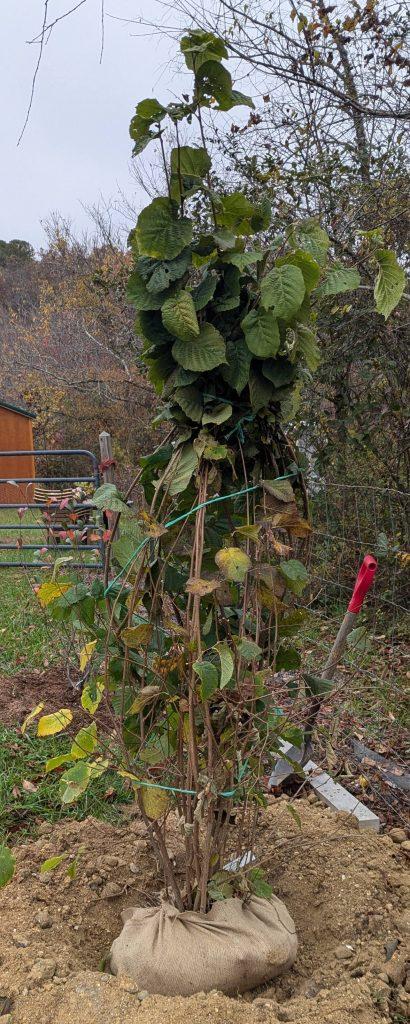
Here are more herbaceous plants to consider adding to your garden with time:
- Asparagus, borage, burdock, cardoon, chicory, chives, dill, fennel, garlic, garlic chives, globe artichoke, horseradish, Jerusalem artichoke, lavender, leeks, lemon balm, lovage, mountain mint, oregano, peppermint, pink dandelion, rhubarb, rosemary, sage, scarlet runner bean, skirrets, sorrel, spearmint, spotted beebalm, strawberry, summer savory, sweet cicely, thyme, walking onions, and winter savory.
Their descriptions and cultivation, we’ll leave to the future, as we add to our food forest!
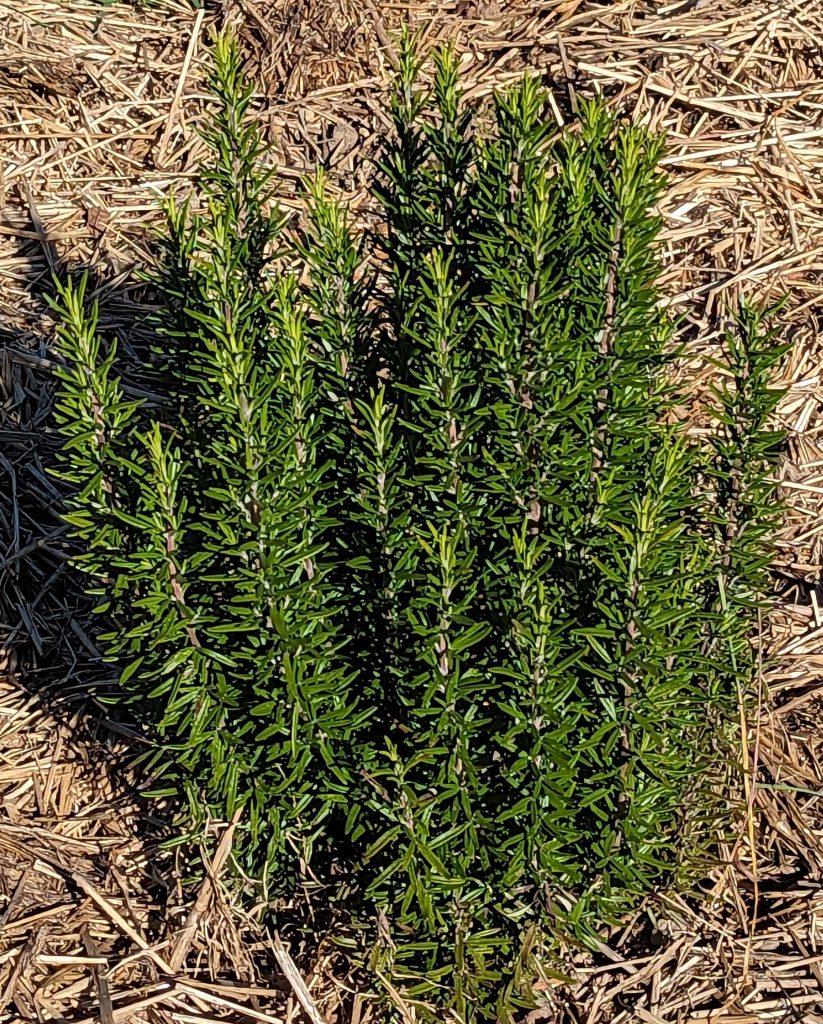
Planting the Forest Garden
Planting a landscape of edible and aromatic plants has several advantages. Tree cover creates a microclimate for the understory, providing shade and moisture in the heat of summer. Vines take advantage of the trees’ branching structure for support. The overstory benefits from the aromatic herbs that repel rodents (field mice that chew on tree bark) and attract pollinators and other beneficial insects that control pests. Ground cover plants compete with weeds. Root crops can be grown in the forest garden. The mixed perennial planting confuses and deters pests. The planting also protects the base of plants from mower damage. Once planted, the garden is thickly mulched. Once established, it requires little maintenance, except perhaps harvesting, some selective pruning and periodically adding mulch.
Let’s look at some design plans for such gardens. The gardens:
- The Chestnut Allée
- The Tree Orchard
- Elderberry, Blueberry, Chokeberry
- Vines
The Allée is a straight path lined with trees or shrubs, generally of the same species.
An Allée of six Dunstan chestnut and three black walnut trees were planted along a 160-foot stretch of path heading toward the creek that borders the northeastern edge of our land. The native American chestnut was devastated by an introduced chestnut blight, Cryphonectria parasitica. The Dunstan chestnut is a hybrid of the American and Chinese chestnut trees that is blight resistant. The trees are planted 30’ on center and top-dressed using woodchips as mulch and underplanted with mint, clover and tansy.
The Installation Particulars
Several weeks before the bareroot chestnut trees arrived in late March, we shallow tilled and raked off the existing sod. To a cover crop mix comprised of 30% field pea, 20% crimson clover, 20% hairy vetch, 15% annual rye, and 15% winter rye, we added tansy seed. Raked in and then mulched with wheat straw, the bed was now prepped for tree planting.


The purpose of the cover crop is to add organic matter and nitrogen to the planting bed. Organic matter is derived from plant biomass (both leaf and root), the nitrogen from rhizobia bacteria that make their home in legume roots (that is, in root nodules), in this case, in field pea, clover and vetch. The tansy, an aromatic composite both deters pests and attracts beneficial insects. The mints are planted at the base of the trees to discourage rodents.
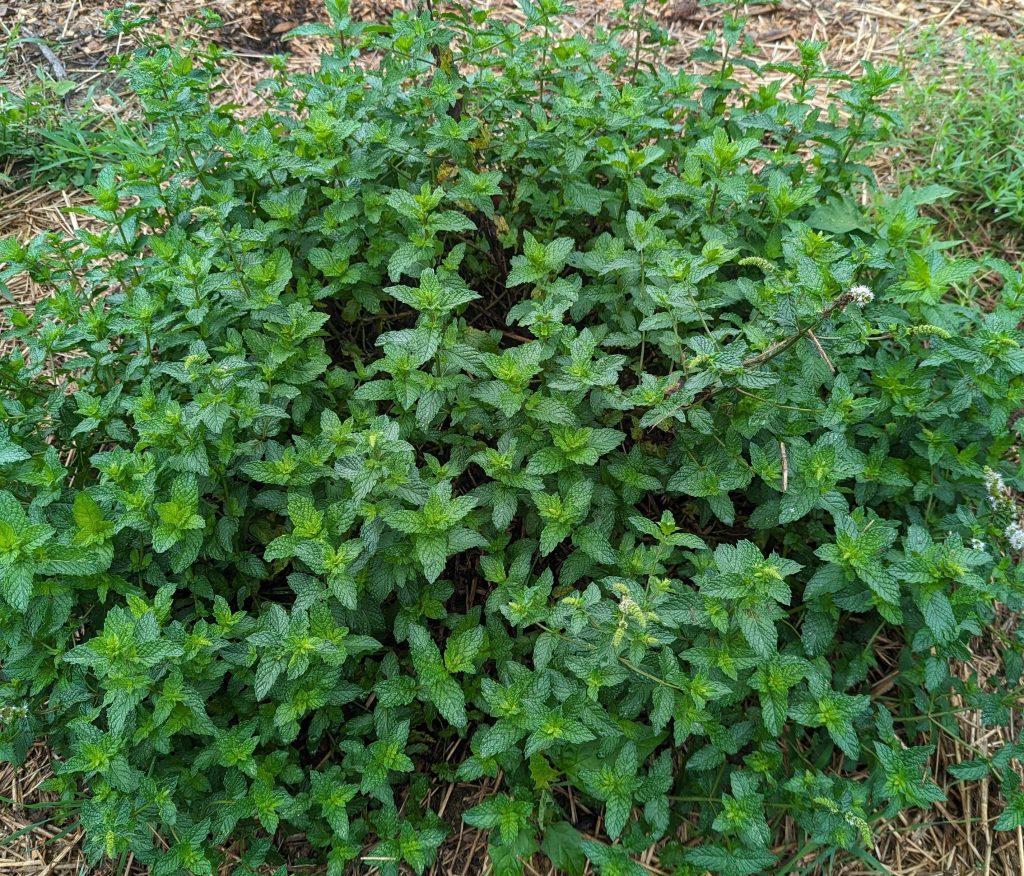
Interplanted are Pawpaws (Asimina triloba), native understory trees that produce a fleshy fruit when they mature. I selected four cultivars: Mango, Allegheny, Shenandoah, and Susquehanna. The latter three selections were made by Neal Peterson, a plant geneticist and avid pawpaw breeder; his best selections were named after rivers. Though not widely planted, these trees are becoming more well known.
The Tree Orchard
The Tree Orchard is planted with apple and pear trees, installed in 2023. The trees are paired and planted at an angle to form living fences. The apple orchard consists of heirlooms, which include Arkansas Black, Cinnamon Spice, Red Vein Crab, Roxbury Russet, and Stayman Winesap, among others. Our selection was based on time of budbreak (mid to late), utility (fresh eating, cider, pies) and disease resistance (good to excellent). A crabapple is always a good choice, as it is an all-round pollinator tree (fruit bearing apples require cross pollination to bear fruit). Here’s a brief description of some of the interesting cultivars:
- Arkansas Black originated in the mid-1850s, a nearly black apple with excellent disease resistance.
- Cinnamon Spice was discovered in a small town in California, its origins are a bit of a mystery. As its name suggests, the apple has notes of cinnamon, sweet, and bears wine red fruit.
- Red Vein Crab apple has dark red flesh with a tangy flavor; makes a tart red sauce and hard cider.
- The Roxbury Russet apple dates to 1635, discovered in Roxbury, Boston. It is considered one of the oldest American fruit trees grown today. An excellent cider apple or for fresh eating.
- Stayman Winesap developed in the mid-1860s. It has a tart, rich wine-like flavor, and can be eaten fresh or pressed for cider.
I selected apples for their mid-season to late-season bloom period to avoid spring frosts that occur with a degree of frequency in the south. For those in the northeast, you may want to select apples that break bud earlier and fruit early enough to harvest. Since it is hard to predict frosts, consider planting a mix of trees that bloom early, mid-season and late. Select at least two varieties that bloom at the same time, for cross pollination. Buy from a reputable source. Apples come in dwarf, semi-dwarf and standard varieties. Your selection will be based on the space you have for planting. The dwarf and semi-dwarf trees are best for home growing. To this planting, we added aromatic herbs and tansy as pest deterrents.

Berries and Vines
Elderberries
We planted 100 elderberries in the upper and lower vineyard. Each were planted 6 feet on center, with 8 feet between rows. The bed preparation was very similar to the beds prepped for tree planting. Though I prefer to use a good quality compost, we just don’t have enough to go around our 12 acres! The cover crop mix is a good stand-in. It will not only add diversity, but on the upper slope it serves to stabilize the soil. The upper plot has between a 15 to 25% slope, which is subject to erosion if left bare.
Plant elderberries in full sun to part shade. They benefit from a good addition of compost at planting. Both flowers and berries (cooked) are used in making (elderflower) liquors and wines. The fruit is high in anthocyanins and vitamin C.
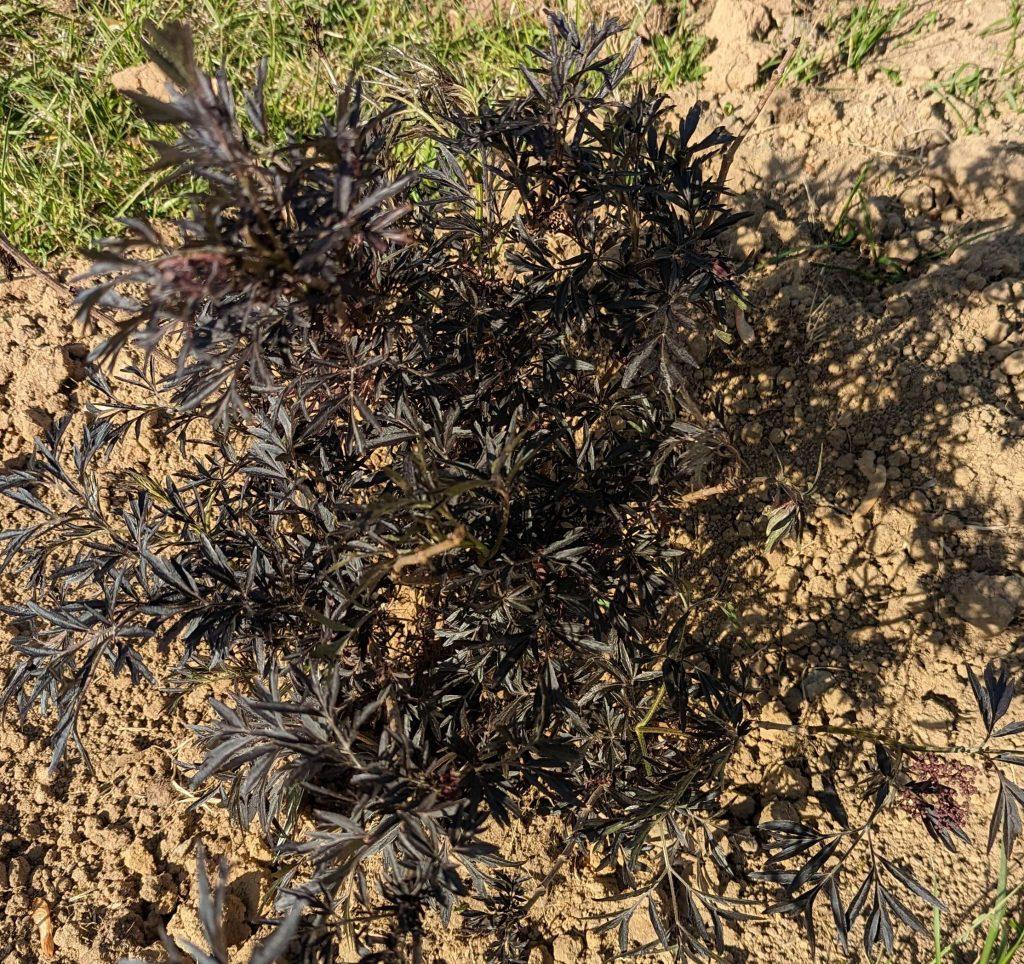
Blueberries
The blueberry beds planted May of 2023 do well in our soil. The three varieties planted are Blue Crop, Duke, and Jersey. They prefer acidic soil, and our soils are ideal with a pH of 5.0. Mulched in pine straw, we also maintain a ground cover between rows to minimize erosion on the sloping plot. Using grass and leguminous cover crops, helps to increase organic matter and supply nitrogen to plant roots. Blueberries prefer full sun to partial shade. They are an excellent choice for a food forest. They grow in both forested areas and bogs.

Black Chokeberry (Aronia melanocarpa)
The name chokeberry comes from the astringency of the fruit, which are also known as Aronia berries. Native to eastern North America, the tart fruit is used to make juice, wine, jams, extracts, and tinctures. The fruit is high in polyphenols, including anthocyanins, and is a source of vitamin C and minerals including potassium and phosphorous. The berries are harvested between 15 and 20∘ Brix, the sugar content is a counterbalance to its tartness. Unlike many Rosaceae (Rose family), it is resistant to pests and diseases, making it ideal for organic culture. However, it is not deer resistant. It prefers moist soils rich in organic matter. Plant in full sun to part shade. Deer rely on their sense of smell when foraging, and strong odors will tend to deter them from feeding. To confound deer, we’ve made the decision to incorporate our plantings into mix beds that contain aromatic herbs including mint and tansy.
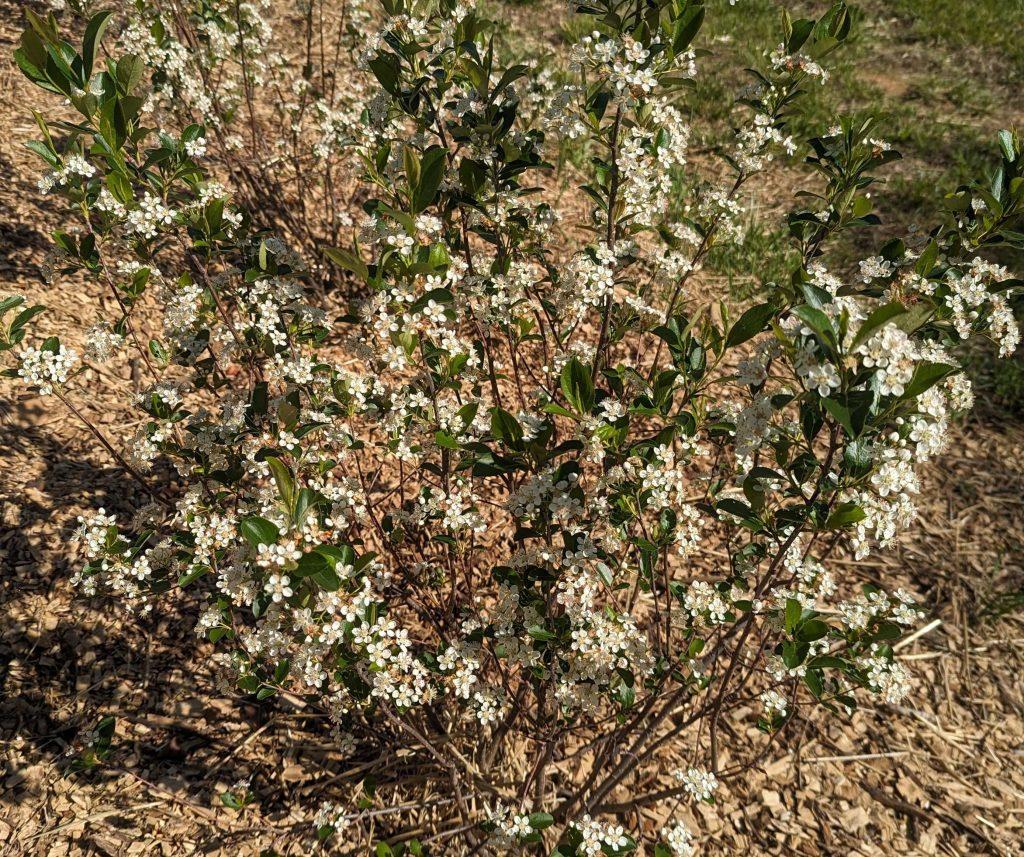
Vines
The larger caliper trees planted include sugar maple, Princeton elm, honey locust, mulberry and Freeman maple. At the base of these trees, we planted grapevines to climb into the tree canopy for support. The hybrids I selected resist many of the vineyard diseases. These include Oberlin noir and Cynthiana. Flowering vines that you may want to train to your trees include passionflower, scarlet runner (bean), moonflower, clematis, trumpet vine, and hardy kiwi, to name a few.
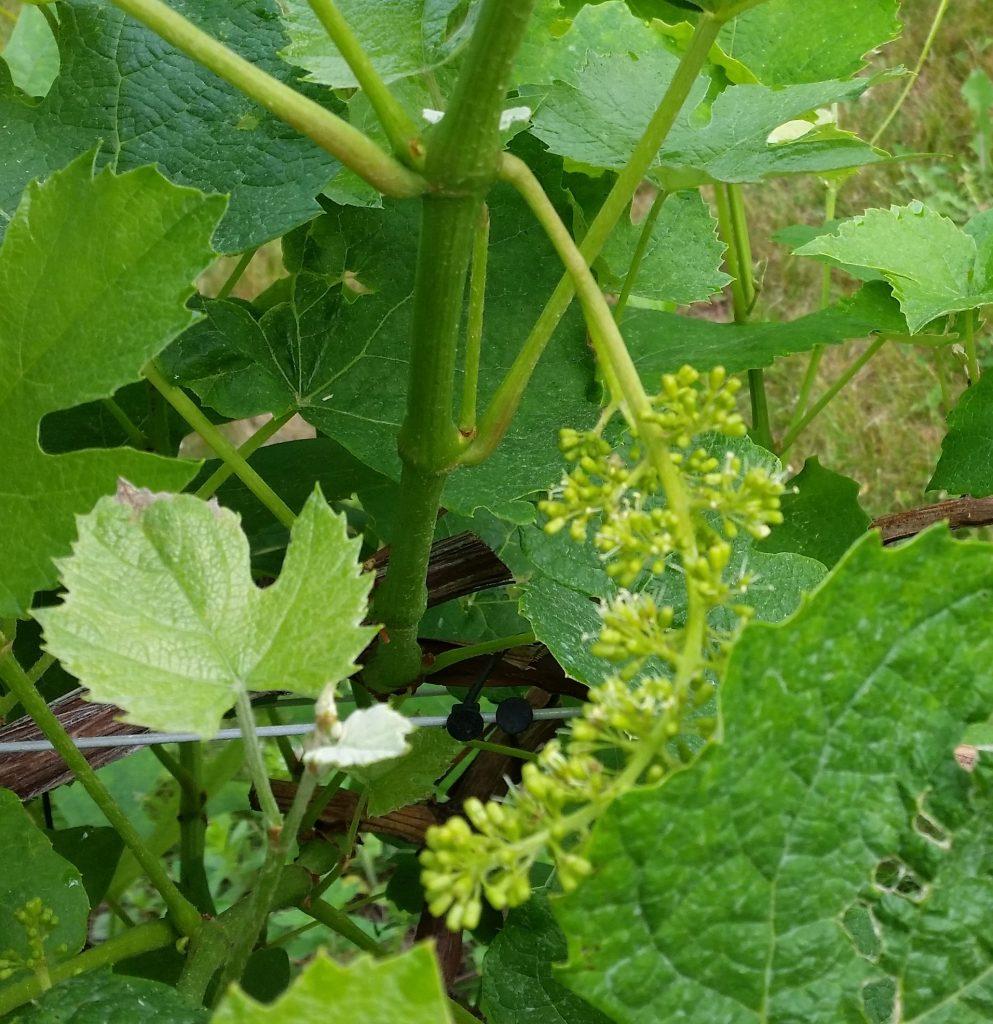
Planting the understory with a cover crop is just the start. It is okay (and recommended) to build your landscape over time. The time permits opportunities to make observations: how the sun hits the garden, where the shady spots are, and where it dries more quickly. Add to the garden, and in cases where plants don’t do well, replace them with better adapted varieties.
Keep in mind the basic elements of the forest garden: trees, shrubs, vines, herbs, ground cover and root crops. Planting perennials, whether woody or herbaceous, means that you don’t have to plant beds every year. Forest gardening is a process of learning through experience. It is living work of art and science. The beauty of the forest garden is that it puts nature to work for you. It is an opportunity to learn firsthand of the cultivars you planted, and to watch the variety of wildlife attracted to your garden. From this perspective, you cannot do anything wrong, so give it a try!
In a future update, we’ll discuss some of the additions to our food forest, including herbaceous plants, root crops and perhaps even mushrooms!
~ Signing off for now, Joe

